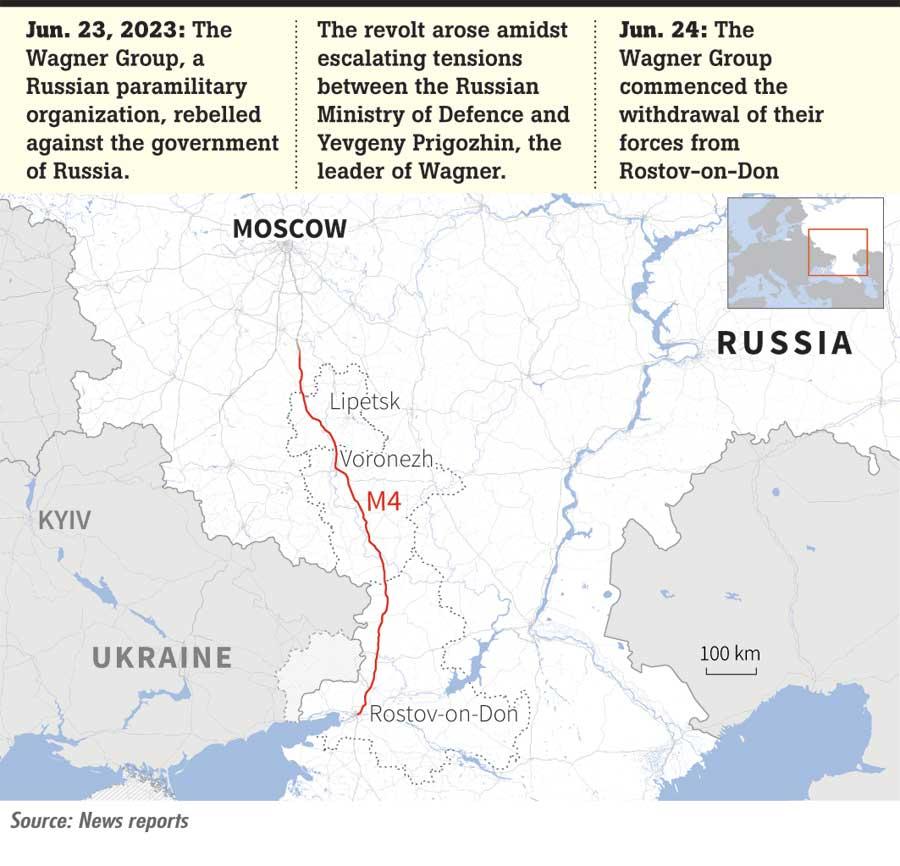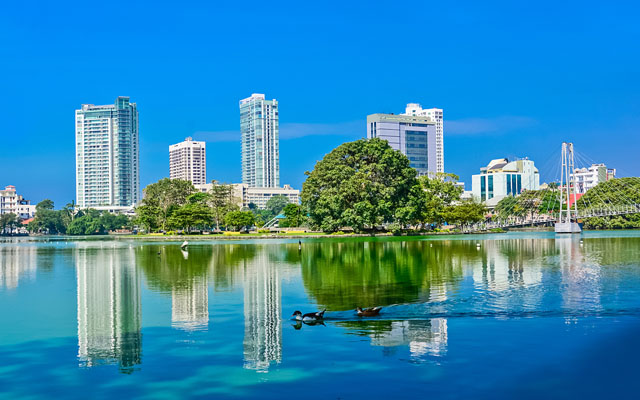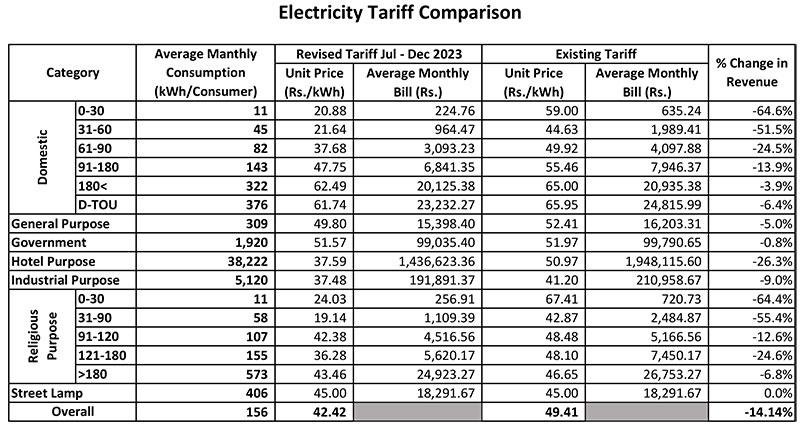Darini Rajasingham-Senanayake
Topped off by a curious ‘coup’ attempt in Russia, June has been a fascinating month with new geopolitical economic developments, twists and turns on many fronts: As US President Biden wooed, wined and dined India’s Prime Minister Modi (who was once refused a visa to America), France’s Macron sought an invite to the BRICS summit to be held in August from South African President Ramaphosa although France is hardly an ‘emerging economy’!
Perhaps Macron’s visit in BRIC’s was due to India’s Foreign Minister Dr. Jaishankar’s recent comment that; ’Europe has to grow out of the mindset that Europe’s problems are the world’s problems but the world’s problems are not Europe’s problems, having tired of lectures about India’s purchases of Russian oil and seemingly breaking Western sanctions.
‘Curiouser and curiousor’ cried Alice of the smiling cat in Wonderland as the US wooed the Indian Defense establishment with a promise of technology transfer and Macron seemed anxious to stay relevant vis-à-vis the BRICS and Global South in his complex pas-de-deux of corporation and competition with Biden.
Simultaneously, debt trapped Sri Lanka’s US Force” backed President Ranil Rajapakse tangoed at the colonial Club de Paris while attending Macron’s ‘Summit for a New Global Financing Pact’, where there was no mention of corruption, murder and other high crimes like the killing of a primary witness of a Court case on the 2015 Bondscam at the Central Bank of Sri Lanka (CBSL), in which President was a respondent before the case was dismissed.
The Club de Paris after all represents predatory Eurobond hedge funds like BlackRock which is Sri Lanka’s main private creditor, and their derivatives’ corruption rackets with networks of rating agencies, accounting, and legal firms that are part of the gravy train of the IMF’s ‘bailout business” as the Transnational Institute in Amsterdam termed it.
Meanwhile the French Spring culture and soft-power charm offensive unfolded for Colombo’s talking classes and twitterrati on the lawn of at the Sri Lanka Foundation to the strains of Edith Piaf’s classic ‘quand il me prend dans ses bras’ as the IMF mission and mandate creep operation to restructure Sri Lanka’s internal or Domestic debt (DDR) to impress the Club de Paris creditors got underway.
Clearly, with French fishing fleets extending their reach into the Central Indian Ocean, the Euro-American jazz ensemble would be playing as another postcolony sinks in debt. But is Macron’s pivot to the BRICs also due to recent setbacks received in Africa; Burkina Faso and Mali!
Need for a Balanced Foreign Policy to escape the Eurobond Debt trap
US ‘force’ backed Ranil Rajapakse however seemed oblivious of Macron’s pivot to the BRICS and the Global South. He persisted in promoting the myth that there is no alternative (TINA), to the IMF, the colonial club de Parise and Eurobond borrowing! He ignored calls from civil society and the Opposition for the strategic island nation to have a balanced Foreign Policy, work together with China and India which are not member of the Colonial Club to join the BRICS’ New Development Bank (NDB), in order to leverage its funds and avoid the fate of Argentina, which is caught in a vicious debt trap; dependent on, and pumped and dumped by predatory Eurobond hedge funds. [i]
Argentina is now on its 9th Default and 22nd International Monetary Fund (IMF), bailout package, again rocked by protests and has applied to join the NDB, but the Sri Lanka president, business community (captains of de-industrialization), and related think tanks and the local corporate media, journalists and bond traders seems to have not heard of the BRICS, NDB or Global South!
Gotterdemmerung: Regime Change in Nuclear armed Moscow?
Meanwhile, in the Russian theater, an exuberant President Zelenskyy claimed that Wagner Group boss Yevgeny Prigozhin’s short march to Moscow was the long awaited NATO-backed Ukrainian counter-offensive which had only ‘just started’ against Russia. That news item and visuals soon disappeared with the coup story fizzling out in less than 24 hours, while the global corporate media held a frenzy of speculation about the demise of Mr. Putin and the dissolution of Russia.
The curious ‘coup’ to take down Russian President Vladimir Putin was aparently checkmated by his friend President Lukashenko who appeared from nowhere to whisk off Prigozhin to exile in Belarus!
Wagner’s Prigozhin meanwhile sounded like a tragi-comic antihero in a Wagner Opera –Gotterdemmerung perhaps? He bewailed that the plan was never to unseat Mr. Putin or do regime change. Putin had helped his star to rise in the first instance. Nor was the plan to create civil war in beloved mother Russia, but to save his men. Putin’s approval ratings are after all are pretty high among the Russian public despite the United States and its NATO allies take on him.
Of course no one mentioned that Prigozhin’s Wagner Group followed in the distinguished tradition of US military contractors like Blackwater, storied in Scarhill’s (2008) book the Blackwater: The Rise of the world’s most powerful mercenary army” well known for dark deeds in Iraq and Afghanistan, that fought shoulder to shoulder with the US military.[ii] Blackwater has since been renamed Academi” of all things so that links to Black Rock and Black stone hedge funds are illusive.
Hardly surprising then that Macron’s request for an invite to the BRICS meeting in South Africa elicited a rather cool reply from President Ramphosa who replied that he’d consult the rest and circle back to Macron.
Meanwhile, in a script that read like a dystopian fairy tale, US President Biden who had been busy scenario mapping and modelling a post-Putin Russia and world order with Canadian Prime Minister Trudeau and other NATO supporters of the War Machine, then proceeded to deny that western intelligence agencies or Disinformation had anything to do with Prigozhin’s purported ‘coup’.
Cold War propaganda seemed to be part of the information war subsequently amplified by Kash Patel who suggested that Mr. Putin had staged the whole show — a new Wagner opera starring Prigozhin. Mr. Putin it seems had nothing better to do than stage own goals and black opera?
Playing with Fire? Regime Change in Nuclear Armed Russia
As events unfolded in Russia there were growing concerns about external attempts at ‘regime change’ which could endanger the planet by putting at risk Russia’s extensive nuclear weapons arsenal.
Regime change operations to divide and rule are designed to cause chaos also to unleash a cascade of violence’ and mask the external actors, behind apparently internal conflicts. This was evident in the playbook recently used in Sudan to destabilize the country and MENA region with the RSF paramilitary group fighting the Sudanese military, soon after the signing of a peace pact between Iran and Saudi Arabia to stabilize the region brokered by China.
Was the Sudan playbook used in Russia with the Wagner opera? It is hardly a secret that the intelligence agencies and Special Forces of the Empire’s military business industrial complex as President Dwight Eisenhower termed it, are past masters and experts at executing seamless Over the Horizon (OTH), Full Spectrum Dominance (FSD) regime change operations while maintaining the ‘mask of democracy’ as happened amid Aragalaya protests in debt trapped Sri Lanka, caught in a hybrid economic war last year. This enabled staging the strategic island’s first ever Sovereign Default while everyone was distracted with the carnivaleque Aragalaya and the installation of Donald Lu’s Force-backed President Ranil Rajapakse to market the narrative that Sri Lanka is bankrupt and there is no alternative to the IMF!
This was done amid a propaganda operation blaming China for the Default which was however staged due to predatory Eurobond debt and the Hamilton Reserve Bank of St Kitts and Nevwi taking out a Court case in New York against the government of Sri Lanka
IMF Mission and Mandate Creep to DDR: Park of Macron’s New Global Financing Pact?
Upon his return from Macron’s Paris Summit for a New Global Financing Pact” Sri Lankan President Ranil Rajapakse following orders received embarked swiftly on internal or domestic debt restructuring (DDR), by declaring an extended holiday and closing the country’s banks.
Although the strategic island’s first ever sovereign debt Default was staged due to EXTERNAL dollar denominated debt listed at $ 26 billion by the External Resources Department in April 2022, last year at the time of default, the island is witnessing IMF mission and mandate creep into Internal or Domestic Debt Restructuring (DDR), This, purportedly to send a signal to the predatory colonial club de Paris creditors. While Sri Lanka civil society groups have called to ban further borrowing from predatory private creditors the IMF requires precisely this from debt restructuring!
The IMF is however, mandated to deal with External dollar-denominated debt and NOT domestic or internal (rupee) debt. Moreover, while Sri Lanka’s debt has mysteriously ballooned with the IMF’s experts, and related accountants and massaging of figures to $86 Billion in a country were debt data, veracity, authenticity and security is highly problematic!
The IMF’s latest conditionality in the wake of Macron’s New Global Financing Pact appears set to increase Sri Lanka’s Debt Numbers Game and debt trap, and lays the ground for the IMF Fire sale of strategic national assets – lands, transport, energy and telecom sector infrastructure.
Remarkably, these same strategic assets had been previously listed and targeted under the US Millennium Challenge Corporation Compact (MCC), that was rejected by the people of a strategic Indian Ocean island that is perpetually in the cross-hairs of big power rivalry.
To be continued: IMF Mission and Mandate Creep into Domestic Debt Restructuring
[i] https://www.bloomberg.com/news/photo-essays/2019-09-11/one-country-eight-defaults-the-argentine-debacles?leadSource=uverify%20wall#xj4y7vzkg
[ii] https://www.thenation.com/article/archive/blackwaters-dark-deeds-exposed/
 stress the importance of civilian control over the military and the war. If this is so with the generals, then where do mercenaries stand when it comes to decisions on war?
stress the importance of civilian control over the military and the war. If this is so with the generals, then where do mercenaries stand when it comes to decisions on war?

